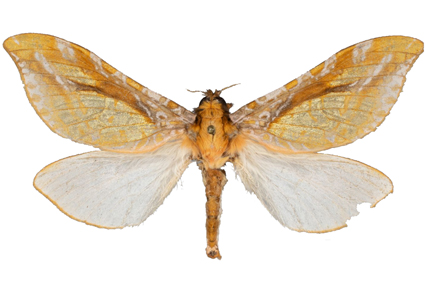Abstract
Three new species of Magnificus Yan, 2000 are described: M. florianii sp. nov. from western Yunnan and M. shaosiming sp. nov. from southern Shaanxi, both in China, and M. ignatevi sp. nov. from West Bengal, India. Six female specimens that could not be positively attributed to any of the species described in this paper were investigated; five specimens (morphotype 1) are considered most similar to Magnificus bouvieri (Oberthür, 1913), and one (morphotype 2) to Magnificus dirschi (Bang-Haas, 1939). These two determinations are described here in detail for future evaluation of the genus. The current southern distributional boundary seems to correspond to two tectonic boundaries—the subduction zone between India and Asia, and the Red River Fault, marking a major tectonic boundary resulting from the accretion of the Indian continent. These tectonic boundaries are consistent with the Laurasian ancestral range, but the new Himalaya record is an indication that Magnificus may be more widely distributed in eastern Asia.
References
- Bang-Haas, O. (1939) Neubeschreibungen und Berichtigungen der Palaearktischen Macrolepidopterenfauna 38. Deutsche Entomologische Zeitschrift, 53, 49–60.
- Chu [Zhu], H.F. & Wang, L.Y. (1985) On the stem-borers of Chinese hepialids (Lepidoptera: Hepialidae). Acta Entomologica Sinica, 28, 293–301. [in Chinese with English summary]
- Cooksey, C. (2013) Quirks of dye nomenclature. 1. Evans blue. Biotechnic & Histochemistry, 89, 111–113. https://doi.org/10.3109/10520295.2013.822560
- Evans, H.M. & Schulemann, W. (1914) The action of vital stains belonging to the benzidine group. Science, 39 (1004), 443–454. https://doi.org/10.1126/science.39.1004.443
- Grehan, J.R. & Knyazev, S. (2019) Potential influence of Mesozoic and Cenozoic tectonics on the evolution of European Hepialidae (Lepidoptera). Biogeographia, 34, 17–32. https://doi.org/10.21426/B634143499
- Grehan, J.R., Mielke, C.G.C., Ignatev, N., de Groof, B., Yakovlev, R. & Klingler, M.A. (2025) Four new species of Aenetus Herrich-Schäffer (Lepidoptera: Hepialidae) from eastern Indonesia, with comment on distributional correlation with Gondwana tectonics. Zootaxa, 5613 (3), 537–554. https://doi.org/10.11646/zootaxa.5613.3.6
- Grehan, J.R., Mielke, C.G.C., Minet, J., Ignatev, N., Buchsbaum, U. & Xue, D. (2021) Taxonomic composition and monophyly of the genus Magnificus (Lepidoptera: Hepialoidea: Hepialidae). Zootaxa, 4920 (3), 339–358. https://doi.org/10.11646/zootaxa.4920.3.2
- Hardwick, D.F. (1950) Preparation of slide mounts of lepidopterous genitalia. Canadian Entomologist, 82 (11), 231–235. https://doi.org/10.4039/Ent82231-11
- Heads, M. (2012) Molecular panbiogeography of the tropics. University of California Press, Berkeley, 562 pp. https://doi.org/10.1525/california/9780520271968.001.0001
- Joseph, K.J. (2018) Colonial Intervention and Hill Ecology: Explaining the historical ecology of Darjeeling Hills. Salesian Journal of Humanities & Social Sciences, 9, 83–92. https://doi.org/10.51818/SJHSS.09.2018.83-92
- Mielke, C.G.C. & Casagrande, M.M. (2013) A new Cibyra Walker, 1856 from southern Brazil (Lepidoptera, Hepialidae). Nachrichten des Entomologischen Vereins Apollo, N.F., 34 (1/2), 73–86.
- Nielsen, E.S., Robinson, G.S. & Wagner, D.L. (2000) Ghost-moths of the world: a global inventory and bibliography of the Exoporia (Mnesarchaeoidea and Hepialoidea) (Lepidoptera). Journal of Natural History, 34, 823–878. https://doi.org/10.1080/002229300299282
- Oberthür, C. (1911) Études de Lépidoptérologie comparée 5. Oberthür, Rennes, 345 pp.
- Oberthür, C. (1913) Explication des Planches publiées dans le Volume VII. In: Études de Lépidoptérologie comparée 7. Oberthür, Rennes, pp. 657–677.
- Pierce, F.N. (1909) The genitalia of the group Noctuidœ of the Lepidoptera of the British Islands. An account of the morphology of the male clasping organs. A.W. Duncan, Liverpool, 88 pp. https://doi.org/10.5962/bhl.title.8998
- Pierce, F.N. (1914) The genitalia of the group Geometridae of the Lepidoptera of the British Islands. An account of the morphology of the male clasping organs and the corresponding organs of the female. F.N. Pierce, Liverpool, 88 pp. https://doi.org/10.5962/bhl.title.19606
- Staudinger, O. (1896) Beschreibungen neuer Lepidopteren aus Tibet. Deutsche Entomologische Zeitschrift, 8, 300–308.
- Sahu, N., Nayan, R., Panda, A. Varun, A., Kesharwani, Das, P., Kumar, A. Mallick, S.K., Mishra, M.M., Saini, A. & Nayak, S. (2025) Impact of changes in rainfall and temperature on production of Darjeeling Tea in India. Atmosphere, 16, 1–20. https://doi.org/10.3390/atmos16010001
- Yan, L. (2000) A new genus and two new species of the Hepialidae (Lepidoptera) from Qinghai, China. Journal of Qinghai University, 18, 1–6. [in Chinese with English summary]
- Zhu, H., Wang, K. & Han, H. (2004) Fauna Sinica Insecta 38. Science Press, Beijing, 952 pp. [in Chinese with English summary]


